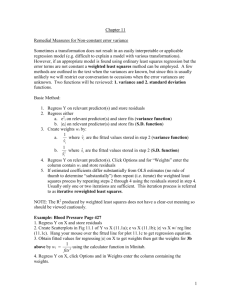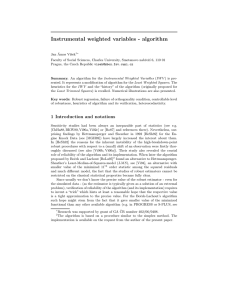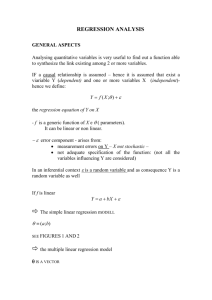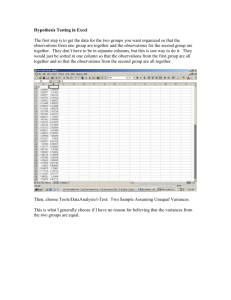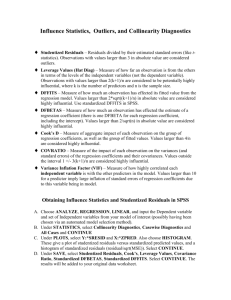WEIGHTED LEAST SQUARES
advertisement
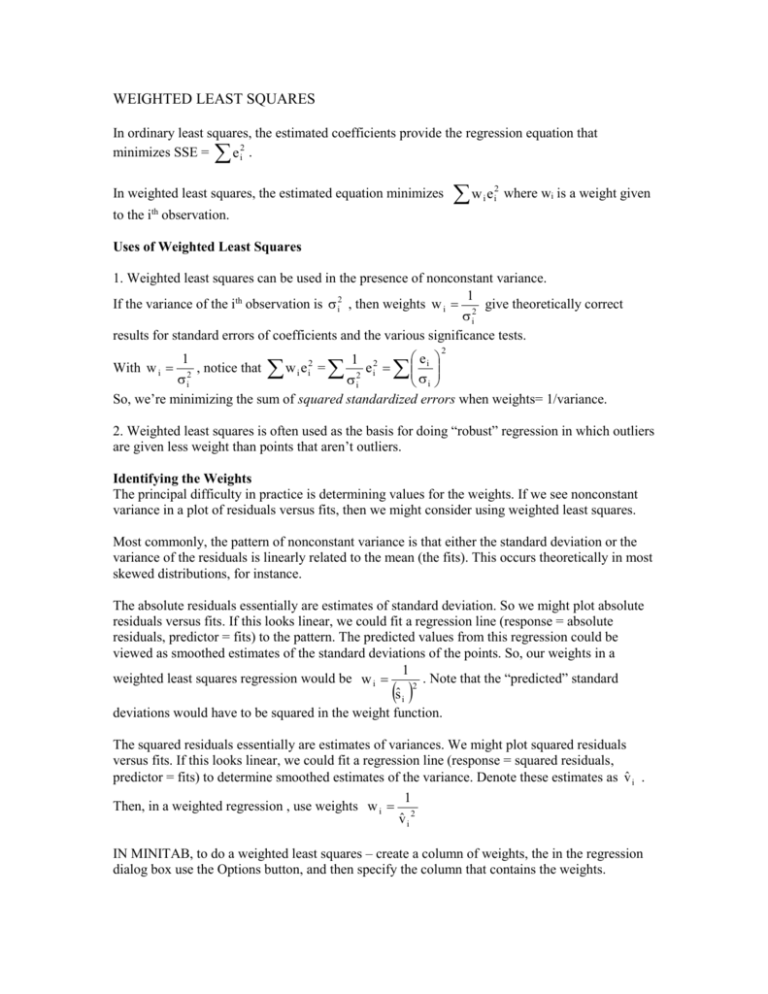
WEIGHTED LEAST SQUARES In ordinary least squares, the estimated coefficients provide the regression equation that minimizes SSE = e i2 . In weighted least squares, the estimated equation minimizes w e 2 i i where wi is a weight given th to the i observation. Uses of Weighted Least Squares 1. Weighted least squares can be used in the presence of nonconstant variance. 1 If the variance of the ith observation is i2 , then weights w i 2 give theoretically correct i results for standard errors of coefficients and the various significance tests. 2 e 1 1 2 With w i 2 , notice that w i e i2 = e i 2 i i i i So, we’re minimizing the sum of squared standardized errors when weights= 1/variance. 2. Weighted least squares is often used as the basis for doing “robust” regression in which outliers are given less weight than points that aren’t outliers. Identifying the Weights The principal difficulty in practice is determining values for the weights. If we see nonconstant variance in a plot of residuals versus fits, then we might consider using weighted least squares. Most commonly, the pattern of nonconstant variance is that either the standard deviation or the variance of the residuals is linearly related to the mean (the fits). This occurs theoretically in most skewed distributions, for instance. The absolute residuals essentially are estimates of standard deviation. So we might plot absolute residuals versus fits. If this looks linear, we could fit a regression line (response = absolute residuals, predictor = fits) to the pattern. The predicted values from this regression could be viewed as smoothed estimates of the standard deviations of the points. So, our weights in a 1 weighted least squares regression would be w i . Note that the “predicted” standard 2 ŝ i deviations would have to be squared in the weight function. The squared residuals essentially are estimates of variances. We might plot squared residuals versus fits. If this looks linear, we could fit a regression line (response = squared residuals, predictor = fits) to determine smoothed estimates of the variance. Denote these estimates as v̂ i . 1 Then, in a weighted regression , use weights w i 2 v̂ i IN MINITAB, to do a weighted least squares – create a column of weights, the in the regression dialog box use the Options button, and then specify the column that contains the weights.

